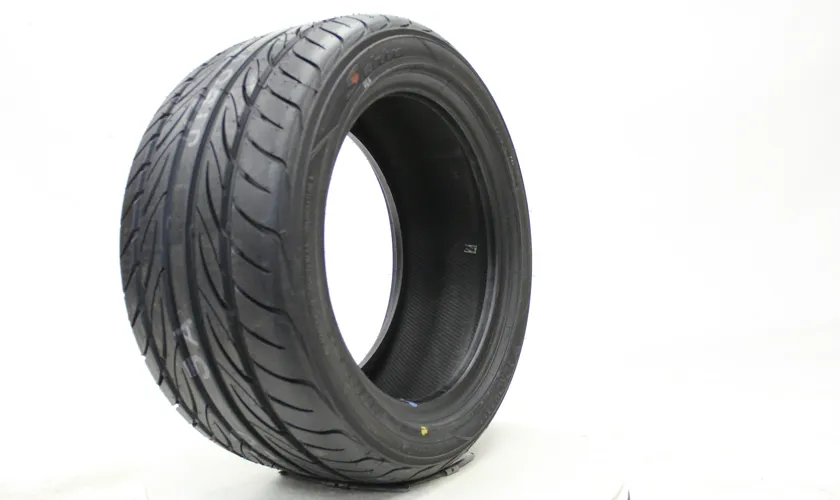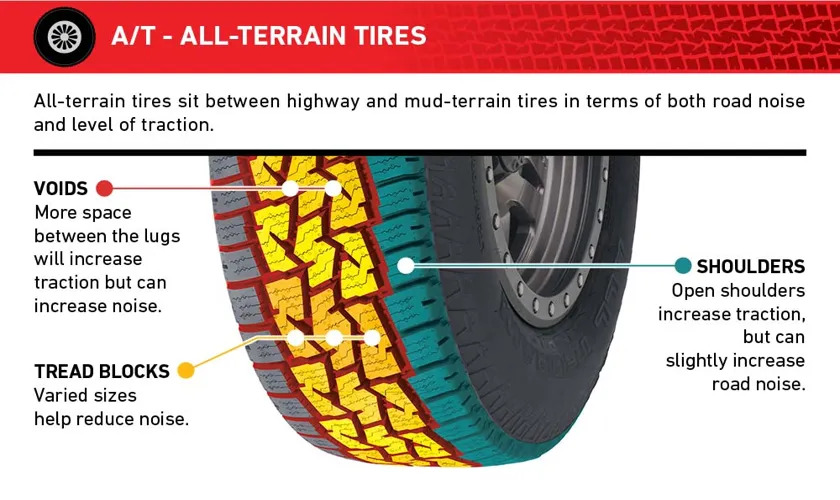Have you ever wondered which tire is the drive tire on your vehicle? It’s a common question that many car owners ask themselves, especially those who are new to driving or are unfamiliar with the mechanics of their vehicle. Understanding the role of the drive tire is crucial for driving safely and efficiently on the road, as well as maintaining and servicing your car. To put it simply, the drive tire is the tire that provides power and traction to move the vehicle forward.
Think of it as the engine of your car’s movement, working in tandem with the rest of the vehicle’s components. In this blog, we’ll delve deeper into the specifics of the drive tire and how it contributes to your car’s overall performance.
Table of Contents
Introduction
Have you ever wondered which tire is considered the drive tire? Well, the answer is not as straightforward as you might think. Generally speaking, the drive tire is the one responsible for providing power to the vehicle, which helps it to move forward. In most rear-wheel drive vehicles, it’s usually the rear wheels that are the drive tires, while in front-wheel drive cars, the front wheels are the ones doing the pushing.
However, one should keep in mind that this is not always the case. Some vehicles have all-wheel drive, which means all four tires play a role in driving the car forward. Additionally, some trucks and larger vehicles have dual wheels on the back axle, meaning both tires are contributing to the driving force.
So, when it comes to which tire is considered the drive tire, it all depends on the type of vehicle you’re driving.
Why Knowing the Drive Tire is Important
When it comes to operating commercial vehicles, knowing the drive tire of your vehicle is essential. The drive tire is the tire that is powered by the engine and is responsible for providing the vehicle with sufficient traction on the road. This tire is typically found in the rear of the vehicle and is specifically designed to handle the added weight and pressure of a commercial vehicle.
Understanding the type of drive tire you have installed on your vehicle is crucial for ensuring optimal performance, fuel efficiency, and safety on the road. Not only does it affect the handling and stability of the vehicle, but it also impacts overall wear and tear on the tire. Therefore, it is essential to choose the right drive tire depending on the specific application and road conditions.
Whether you are driving on highways, city streets, or country roads, choosing the right drive tire will make all the difference in terms of safety, performance, and longevity.

Potential Issues When Using the Wrong Drive Tire
As a truck driver or fleet manager, it’s important to choose the right drive tire to ensure maximum performance and safety on the road. Using the wrong drive tire can result in potential issues that may compromise the vehicle’s stability and maneuverability, leading to accidents or breakdowns. The most common issue that can arise when using the wrong drive tire is reduced traction, especially during wet or icy weather conditions.
This can put the driver at risk of skidding or slipping off the road, endangering both the cargo and the driver’s life. It’s crucial to select the right drive tire that matches the specific needs of the vehicle and the driving conditions. Failing to do so can lead to costly repairs, downtime, and even legal liabilities.
So, make sure to consult with a reputable tire specialist and choose the right tire that will deliver optimal performance and safety on the road.
Determining the Drive Tire on Vehicles with Front-Wheel Drive
Many people wonder which tire is the drive tire on vehicles with front-wheel drive. The answer is simple: the front tires are the drive tires. In a front-wheel drive vehicle, the engine’s power is sent to the front wheels, which in turn provide the power to move the vehicle forward.
This means that the front tires have the responsibility of transmitting the engine’s power to the road surface. It’s important to note that while the rear tires may also provide some grip and stability while driving, they are not actively involved in delivering power to the wheels. As such, it’s crucial to keep an eye on the condition of your front tires, as they are the ones doing the heavy lifting when it comes to driving your car.
Regular tire rotations and proper maintenance can help ensure that your vehicle remains safe and reliable on the road.
Explanation of Front-Wheel Drive and its Impact on the Drive Tire
Front-wheel drive vehicles are becoming increasingly popular in the current automotive market. As the name suggests, this type of vehicle has the powertrain situated in the front of the car, with the front wheels responsible for both steering and driving the vehicle. This design has a significant impact on the drive tire of a vehicle, with the front wheels bearing most of the weight and power.
As such, the front tires are usually the drive tires on vehicles with front-wheel drive. This is because the front wheels have the highest amount of grip on the road and are responsible for most of the vehicle’s acceleration and braking. It is essential to ensure that the front tires of your vehicle are maintained correctly, and the appropriate tire type is used based on the specific requirements of the vehicle.
Using the correct drive tire on vehicles with front-wheel drive provides optimum performance and ensures maximum safety while driving.
How to Identify the Drive Tire on Front-Wheel Drive Vehicles
If you have a front-wheel drive vehicle and you need to replace just one tire, it’s important to know which one is the drive tire. The drive tire is the one that receives the majority of the power from the engine and provides the main force for moving the car forward. To determine which tire is the drive tire, start by looking at the tire wear patterns on all four tires.
The drive tire will generally have more wear and tear than the others. Another way to identify the drive tire is to look at the direction of the tire treads. The drive tire will have a tread pattern that is designed to push the car forward.
The other tires will have a tread pattern that is designed to provide traction when turning. Identifying the drive tire is important because it ensures that you replace the worn tire with the same type of tire. This helps to maintain the overall performance and handling of the vehicle.
Determining the Drive Tire on Vehicles with Rear-Wheel Drive
Determining which tire is the drive tire on vehicles with rear-wheel drive can be confusing for many people. The drive tire is the one that powers the vehicle and propels it forward, while the other tires assist with steering and braking. On rear-wheel drive vehicles, the drive tire is typically the one located at the rear of the vehicle, as it is the one that receives power from the engine and sends it to the transmission for operation.
To determine which tire is the drive tire, one can look at the tread pattern on all of the tires, with the drive tire often featuring a more aggressive, deeper tread for better traction. Additionally, one can check the owner’s manual or consult with a mechanic for further guidance. Knowing which tire is the drive tire is important for proper tire maintenance, as the drive tire can wear more quickly and may need to be replaced more frequently than the other tires on the vehicle.
Explanation of Rear-Wheel Drive and its Impact on the Drive Tire
When it comes to vehicles with rear-wheel drive, it’s important to consider which tire is the drive tire. The drive tire is the one responsible for powering the vehicle and providing the needed grip to keep the car moving forward. In a rear-wheel-drive vehicle, the drive tire is typically located at the back of the car.
This arrangement has a significant impact on the way the car handles. Rear-wheel drive cars tend to have a more balanced weight distribution, which makes them more stable under braking and cornering. At the same time, the drive tire has a lot of weight over it, which allows it to grip the road better and transmit power more efficiently.
This is why the drive tire on a rear-wheel-drive car is often wider than the other tires and may have a different tread pattern to provide better traction. Ultimately, choosing the right drive tire for your vehicle is crucial for maximizing performance and handling.
How to Identify the Drive Tire on Rear-Wheel Drive Vehicles
If you’re driving a rear-wheel-drive vehicle, you may be wondering how to identify the drive tire. The drive tire is the tire that applies the engine’s power to the road, making it one of the most critical tires on your vehicle. So, how can you determine which tire is the designated drive tire? It’s simple! Just look at the rear wheels of your vehicle.
The drive tire will be the tire that has more wear and tear, as it is the tire that faces the most stress when driving. If you still can’t determine which tire is the drive tire, try spraying water onto your tires and accelerating. The tire that spins the most is the drive tire.
Keep in mind that tire rotation can impact tire wear, which might make it more challenging to determine which tire is the drive tire. To prevent uneven wear, get your tires rotated regularly, and keep an eye on their condition. By doing so, you’ll easily be able to determine which tire is the drive tire when the time comes.
Final Thoughts
If you’re wondering which tire is the drive tire, it’s typically the ones that provide power to move the vehicle forward. In most cases, vehicles have either two-wheel drive or four-wheel drive, and they typically have a designated drive axle. The drive axle, also known as the powertrain or rear axle, is the axle that’s responsible for transmitting power from the transmission to the wheels that drive the vehicle.
In two-wheel drive vehicles, power is typically delivered to the rear wheels, which means the rear tires are the drive tires. However, in four-wheel drive vehicles, power is typically delivered to all four wheels, so all four tires can be considered drive tires. It’s important to have a good understanding of which tires are the drive tires, as this can help you understand how the powertrain works and how to maintain your vehicle’s tires for optimal driving performance.
Conclusion
In conclusion, the answer to the age-old question of which tire is the drive tire ultimately lies in the hands (or should I say, wheels) of the vehicle itself. So, whether it’s the left, right, or even all-wheel drive, the drive tire is simply the one responsible for powering the vehicle forward. However, if you ever find yourself in a heated debate about this topic, just remember that the true drive tire is the one that drives the conversation towards a clear and witty conclusion.
“
FAQs
What is a drive tire?
A drive tire is a tire that provides the power to move the vehicle forward.
How can you identify the drive tire?
The drive tire is usually located at the rear of the vehicle and will have the most wear compared to the other tires.
What is the purpose of the drive tire?
The purpose of the drive tire is to provide traction and move the vehicle forward.
Are all vehicles equipped with a drive tire?
No, not all vehicles are equipped with a drive tire. Some vehicles, such as electric cars, have a different type of propulsion system.
Can you replace a drive tire with any other tire?
No, the drive tire should be replaced with the same type and size of tire to maintain proper traction and handling.
What happens if the drive tire loses traction?
If the drive tire loses traction, the vehicle may not move forward or may slide uncontrollably.
How often should the drive tire be checked for wear?
The drive tire should be checked for wear regularly, especially before long trips or in extreme weather conditions.



